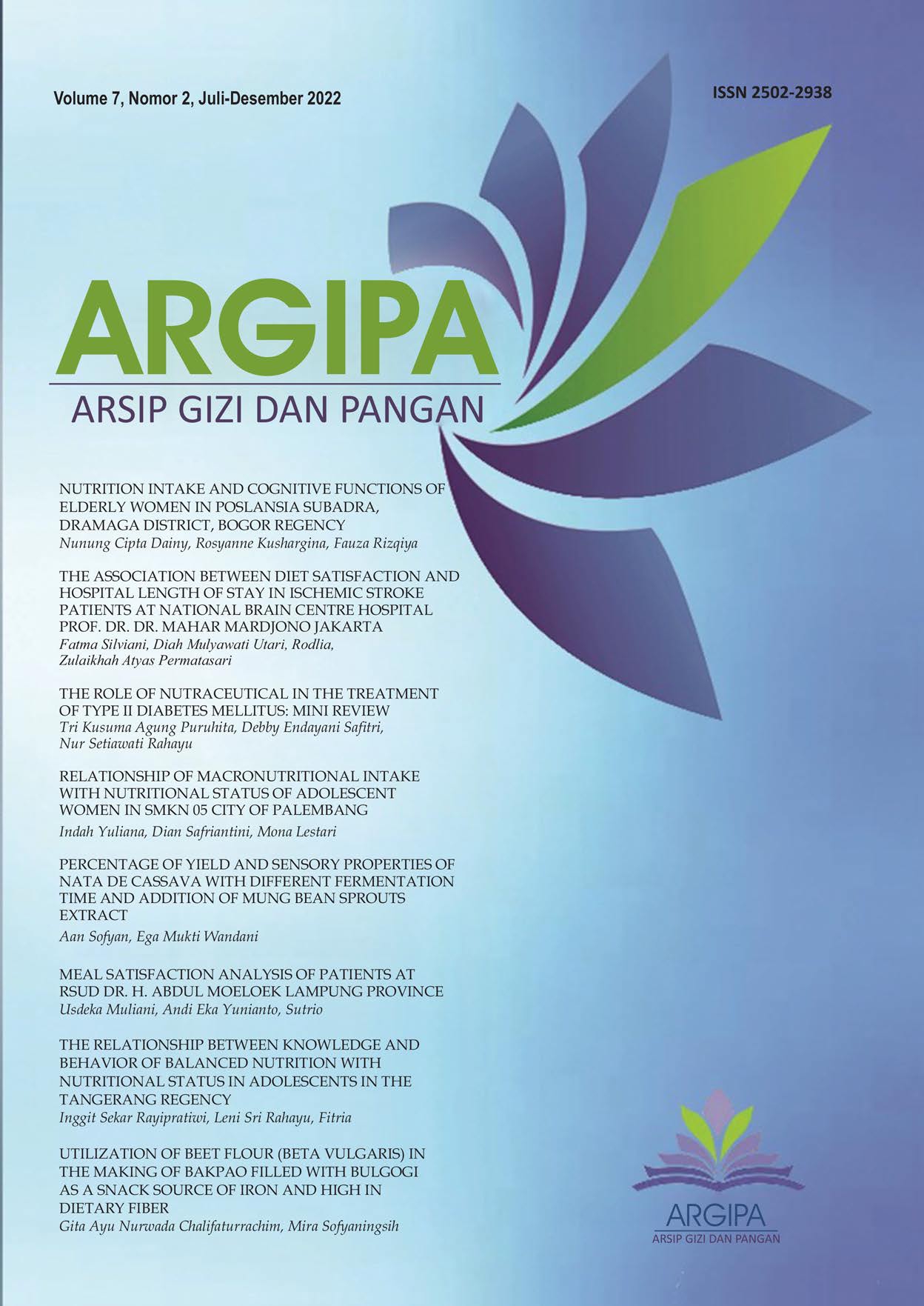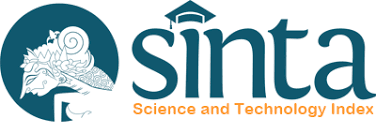Relationship of macronutritional intake with nutritional status of adolescent women in SMKN 05 City of Palembang
DOI:
https://doi.org/10.22236/argipa.v7i2.7989Keywords:
BMI, Girls, Nutrient IntakeAbstract
Currently, Indonesia has a triple burden of nutritional problems, namely stunting, wasting and obesity as well as micronutrient deficiencies such as anemia. This study aims to analyze the relationship between intake of macronutrients and nutritional status based on BMI. This study uses a cross sectional design. Data collection was carried out in September-October 2021 in Palembang with a sample of 129 young women selected by purposive sampling. The variables to be examined in this study were the nutritional status of female adolescents based on BMI, while energy, protein, fat and carbohydrate intake was measured using the semi-quantitative food frequency questionnaire method. Data analysis used the Chi Square test to see the relationship between variables. The results of the analysis showed that there was a relationship between protein intake and the nutritional status of female adolescents (p<0.05), while energy, carbohydrate and fat intake were not related to nutritional status (p> 0.05). This proves that protein intake is very important for young women to support growth.Downloads
References
Anand D, Anuradha RK. 2016. Malnutrition status of adolescent girls in india: a need for the hour. International Journal of Science and Research. 5(3): 642-646.
Ariesta, Ervina. 2015. Pengaruh keanekaragaman jenis makanan terhadap kejadian dismenorhoe. Jurnal Obstretika Scientia ISSN 2337-6120.
Badan Kependudukan dan Keluarga Berencana Nasional, Badan Pusat Statistik Republik Indonesia. 2017. Survei Demografi dan Kesehatan: Kesehatan Remaja 2017.
Badan Penelitian dan Pengembangan Kesehatan Kementerian Kesehatan Republik Indonesia. 2013. Riset Kesehatan Dasar 2013. Jakarta: Badan Penelitian dan Pengembangan Kesehatan.
Badan Penelitian dan Pengembangan Kesehatan Kementerian Kesehatan Republik Indonesia. 2019. Laporan Nasional Riset Kesehatan Dasar 2018. Jakarta: Badan Penelitian dan Pengembangan Kesehatan.
Bhat AN, Yograj S, Sahi M. 2015. Presence of Iron Deficiency Anemia in Adolescent Girls of Jammu District and its Effect in their Physical Performance. Indian Journal of Clinical Anatomy and Physiology 2(4):164-168.
Gugus Tugas Percepatan Penanganan COVID-19. 2020. Peta Sebaran Kasus Per Provinsi. https://covid19.go.id/peta-sebaran
Kementerian Kesehatan Republik Indonesia [Kemenkes RI]. 2020. Pedoman Pelayanan Gizi Pada Masa Tanggap Darurat COVID-19. Jakarta: Kemenkes RI.
Shabnam Omidvar, Fatemeh Nasiri Amiri, Afsaneh Bakhtiari, Khyrunnisa Begum. 2020. A study on menstruation of Indian adolescent girls in an urban area of South India. J Family Med Prim Care 7:698-702.
Rafique N, Al-sheikh MH. 2018. Prevalence of menstrual problems and their association with psychological stress in young female students studying health sciences. Saudi Med J; Vol. 39 (1): 67-73
United Nations Children's Fund [UNICEF]. 2020. COVID-19 dan Anak-anak di Indonesia. https://www.unicef.org/indonesia/media/4636/file.
United Nations Children's Fund [UNICEF]. 2012. Progress for children: A report card on adolescents. New York: United Nations Children's Fund
Arikunto. (2013). Prosedur Penelitian Suatu Pendekatan Praktek. Jakarta: Rineka Cipta
Fitria, L.P. (2016). Hubungan Tingkat Stres denagn Siklus Menstruasi pada Guru dan Karyawan SMP Negeri 18 Surakarta. (3), 2407-2656
Hendrik. (2006). Problema Haid Tinjauan Syariat Islam dan Medis. Solo: Tiga Serangkai
Downloads
Published
How to Cite
Issue
Section
License
Copyright (c) 2023 ARGIPA (Arsip Gizi dan Pangan)

This work is licensed under a Creative Commons Attribution 4.0 International License.

















